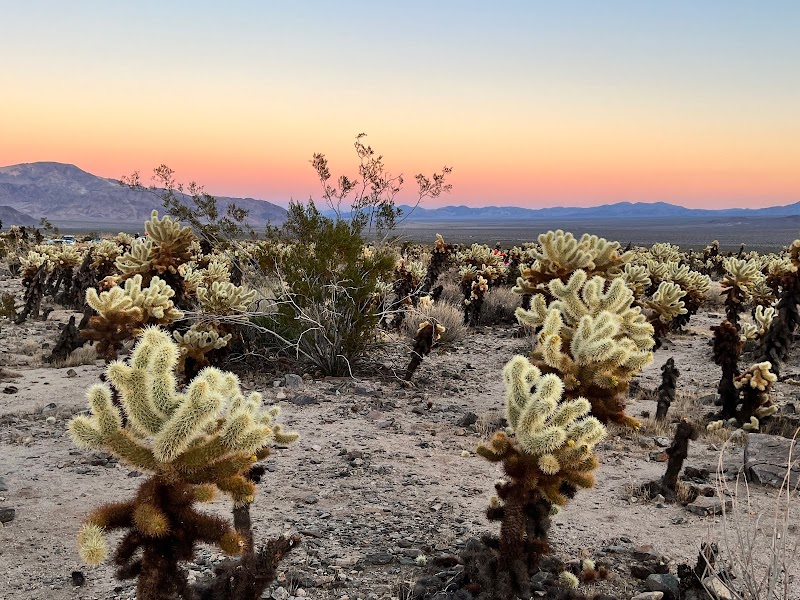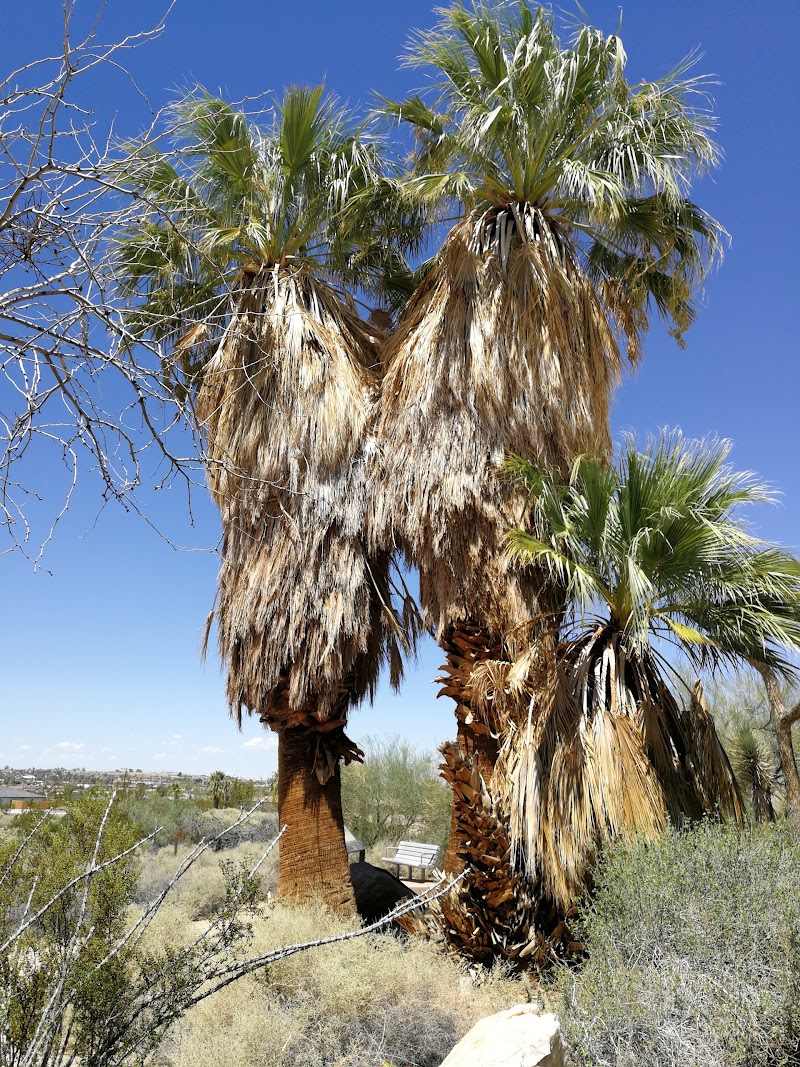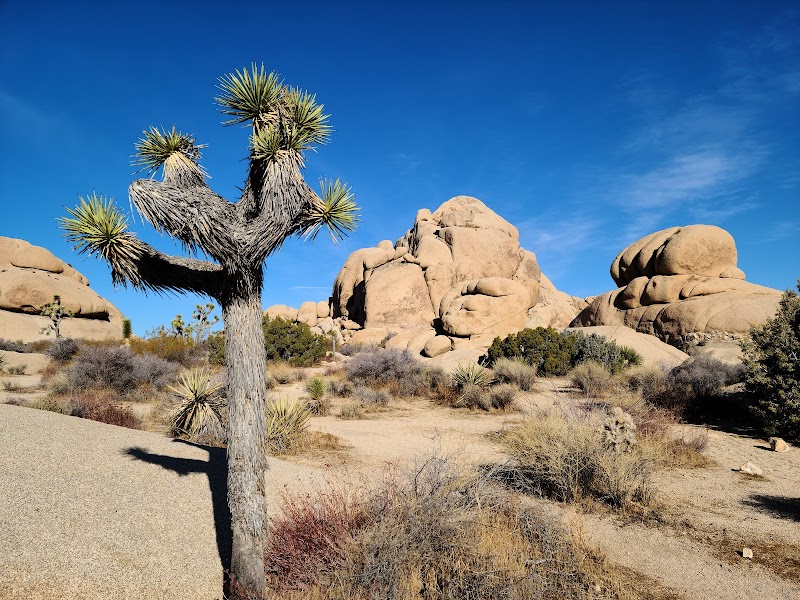Explore the Magic of Joshua Tree National Park
Did you know that Joshua Tree National Park spans over 790,000 acres, making it larger than the state of Rhode Island? This vast wilderness is home to a mix of two distinct desert ecosystems, the Mojave and the Colorado, and is famed for its iconic, twisted Joshua Trees. With attractions like the mystical Cholla Cactus Garden and the grandeur of Keys View, this park is a captivating fusion of natural beauty and fascinating geology.
The best way to start your adventure? Equip yourself with a comprehensive tourist map. This invaluable tool will be your guide to exploring the mesmerizing landscapes, helping you plan your journey through the park's wonders. With its clear markings and detailed information, the map will ensure that you don't miss out on any of Joshua Tree's enchanting attractions.
Discover the Wonders of Joshua Tree National Park
As you embark on your adventure through Joshua Tree National Park, you'll find a myriad of fascinating attractions waiting to be explored. From unique rock formations to historic sites, each landmark offers a captivating glimpse into the park's multifaceted nature. Here are some of the must-visit spots that should certainly find a place on your itinerary: Skull Rock, Hidden Valley, Barker Dam, Lost Horse Mine, Keys Ranch, Arch Rock, and the Joshua Tree Visitor Center.
Unveiling the Secrets of Skull Rock
At first glance, Skull Rock might seem like an ordinary boulder, but a closer look reveals its striking resemblance to a human skull. This unique rock formation, a result of years of erosion, is located right next to the main road, making it a convenient first stop on your journey through the park. Near Skull Rock, you'll find the Jumbo Rocks campground, a great place to set up camp and soak in the surroundings.
Hidden Valley: A Haven for Rock Climbing Enthusiasts
Next on your list should be Hidden Valley, a secluded area surrounded by towering rocks, making it an ideal spot for rock climbing. Legend has it that this was once a hideout for cattle rustlers. As you traverse the trails, you'll understand why this place is called "Hidden Valley". It's also conveniently located near Barker Dam, another must-visit site, which is just a short drive away.
The Historic Barker Dam
Constructed over a century ago by cattle ranchers, Barker Dam is a testament to the park's rich history. It's not just a historic site, but also a vital watering hole for the park's wildlife. If you're lucky, you might even spot some bighorn sheep or coyotes. Be sure to check out the nearby Wall Street Mill, a well-preserved gold processing mill from the late 1800s.
Lost Horse Mine: A Glimpse into the Past
Delve into the park's mining history by visiting the Lost Horse Mine, one of the most productive gold mines in the area during the late 19th and early 20th centuries. The 4-mile round trip hike to the mine is a rewarding journey, offering panoramic views of the park's diverse landscapes. While you're in the area, consider visiting Keys View for a breathtaking vista of the Coachella Valley.
The Rustic Keys Ranch
Keys Ranch, operated for over 60 years by the Keys family, provides an intimate look into the life of early settlers in the area. From the old schoolhouse to the orchard, each element of the ranch tells a fascinating story. While here, don't forget to explore the nearby Desert Queen Mine, another relic from the park's mining past.
Arch Rock: A Natural Marvel
Arch Rock, a remarkable natural arch, is a testament to the park's unique geology. This impressive formation is a result of weathering and erosion, showcasing the ever-changing nature of the desert. To get a broader understanding of the area and to plan your trip more efficiently, be sure to use a tourist map of United States.
Get Acquainted at the Joshua Tree Visitor Center
Start your exploration of Joshua Tree National Park at the Joshua Tree Visitor Center. Here, you can learn about the park's ecology, wildlife, and history through informative exhibits and knowledgeable staff. It's also a great place to get tips on how to best explore the park, ensuring you make the most of your visit.

Practical Information for Joshua Tree National Park
Transportation and Mobility
Getting around Joshua Tree National Park requires some planning. Your best bet is to drive, as the park is vast and remote, with few public transportation options. The park’s roads are well-maintained and suitable for all vehicles, although some dirt roads require four-wheel drive. Car rentals are widely available from nearby cities such as Palm Springs, Indio, or Twentynine Palms.
Schedules and Prices
Joshua Tree National Park is open 365 days a year, 24 hours a day, giving you the flexibility to plan your visit according to your schedule. However, the visitor centers and campgrounds operate on specific schedules. The Joshua Tree Visitor Center is open daily from 8 am to 5 pm. Campgrounds vary in schedule and require a reservation during the busy season from October to May. Entrance fees are $30 per vehicle, $25 per motorcycle, or $15 per individual on foot or bicycle. An annual pass is available for $55.
Safety Tips
Your safety is paramount when exploring Joshua Tree National Park. Ensure you have plenty of water, as the desert climate can be deceptively arid and hot, leading to dehydration. Always stay on designated trails to protect the environment and prevent getting lost. Cell service is limited, so plan your route and inform someone of your plans before you set off. Lastly, remember that wildlife is protected; always observe from a distance and do not feed the animals.
Practical Recommendations
When planning your visit to Joshua Tree National Park, consider the season, as temperatures can vary dramatically. Summer can be scorching, with temperatures exceeding 100 degrees Fahrenheit, while winter temperatures can dip below freezing at night. The most pleasant times to visit are spring and fall, when the temperatures are moderate, and the park's flora is in full bloom. Don't forget your sunscreen, hats, and comfortable walking shoes!

Frequently Asked Questions
1. Can I bring my pet to Joshua Tree National Park?
Yes, pets are allowed in Joshua Tree National Park, but their activities are significantly restricted to protect the park's unique ecosystem. Pets must be on a leash at all times, and they're only permitted on roads, in campgrounds, and other developed areas. They're not allowed on any of the park's trails or in the backcountry.
2. Are there any guided tours available in the park?
Joshua Tree National Park offers a variety of ranger-led programs that can enrich your visit. These include nature walks, talks on various topics, and night sky programs. However, the availability of these programs can vary seasonally, so it's best to check the official park website for the most current information.
3. What kind of wildlife can I expect to see in the park?
Joshua Tree National Park is home to many species of wildlife, including coyotes, bobcats, bighorn sheep, and numerous species of birds. Remember, it's important to observe all wildlife from a safe distance and not to feed any animals you encounter. Feeding wildlife disrupts their natural behavior and can be harmful to their health.
4. Is there any special equipment I need to bring for hiking in Joshua Tree National Park?
Preparation is key when planning to hike in Joshua Tree National Park. In addition to plenty of water and sun protection, it's recommended to bring a topographic map, compass, and if possible, a GPS device. It's also a good idea to carry a first-aid kit and be aware of your physical limitations to avoid overexertion in the desert heat.
5. Are there any special events or festivals in or around Joshua Tree National Park?
Joshua Tree National Park and the surrounding area host a variety of events throughout the year. These include music festivals, art exhibitions, and cultural celebrations. Check local event listings or the official park website for up-to-date information on what's happening during your visit.
6. Can I rock climb in Joshua Tree National Park?
Joshua Tree National Park is a world-renowned destination for rock climbing, with over 8,000 climbing routes available. However, it's important to note that climbing is not permitted on certain cultural sites within the park, and care must be taken to minimize impact on the park's unique environment. Always check the park's climbing guidelines before your visit.

